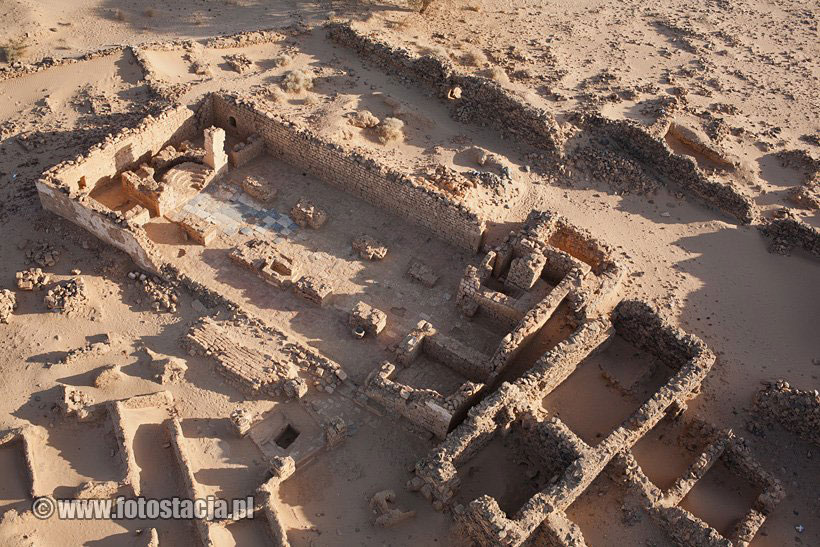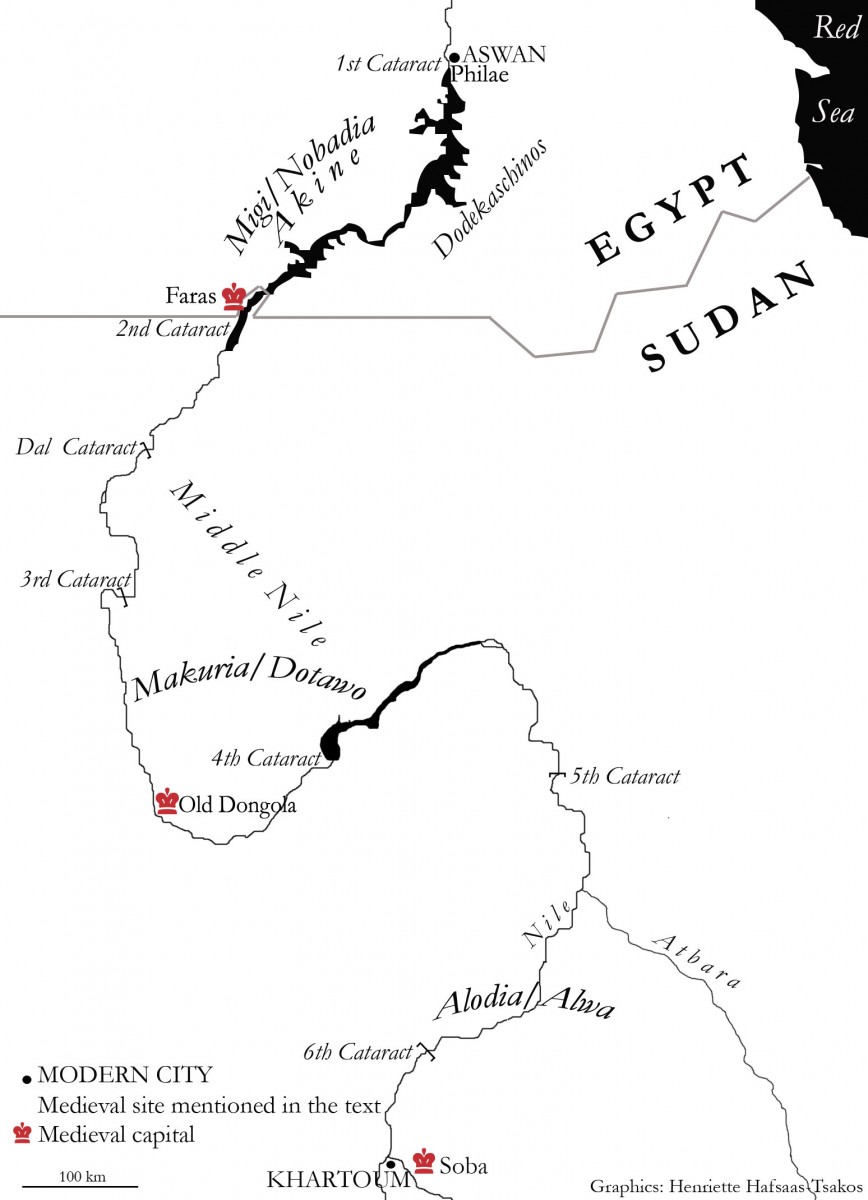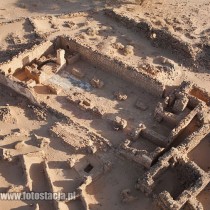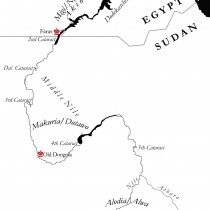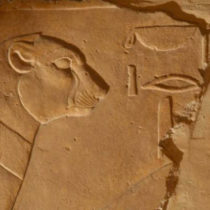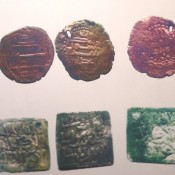I was asked to write a paper on the contacts between the Greco-Roman world and Nubia and the influences of the first on the latter during Late Antiquity and the Middle Ages. In my opinion, there is a misunderstanding in the conventional approach to Nubian culture during the periods under consideration. Contrary to mainstream ideas, I believe that it should not be seen as different or alien to the culture of the core areas of the Byzantine Empire. I will argue that Nubia was an integral part of the Byzantine ecumene. Thanks to their ambitious rulers, the Nubian kingdoms formed a part of the Mediterranean world. Thus, we need to discuss internal relations rather than external ones within the same cultural koine ― as at best it has been done until now. The Middle Nile Valley has always been in contact with the so-called central areas of the Mediterranean civilization ― either it was Egypt, Greece or Rome. Sometimes, like in the period of the 25th Dynasty, inhabitants of the Middle Nile Valley even ruled over one of those centers, namely Egypt. They fought back and forth with Ptolemaic Egypt or the mighty Roman Empire and in modern times formed part of the Ottoman Empire and the Anglo-Egyptian condominium. My thesis in the present paper is that immersion into the Mediterranean culture has never been more intensive than in the period between the 5th and the 14th centuries CE. The starting point for the discussion will be the fall of the kingdom of Meroe. Three new states arose on the ashes of Meroe at the end of the fourth century: the most northern one, Nobadia, was located between the first and third Nile cataracts; Makuria had a territory between the third and fifth or sixth cataracts; the most southern one was Alodia. The names I have just mentioned are not indigenous. They were given by Byzantine historians and then repeated in more or less corrupted form by Arab historians and geographers. The native people probably called their countries Migi, Dotawo and Alwa respectively, but in the course of time they also adopted Byzantine nomenclature at least in the case of Nobadia and Makuria. Unfortunately no native historical narrative is known to have been written and none has survived to our days. The only book devoted exclusively to Nubia is Ibn Selim el-Aswani’s tenth century description of the Nubian kingdoms, titled Kitab Akhbar al-Nubah wa-alMuqurrah wa ‘Alwa wa-al-Bujah wa-al-Nil. This book was once widely known as it was cited by at least three different authors, but it is now lost. There is a gap in Roman/Byzantine literary sources regarding Nubia from the mid-fifth until the early 6th century. The sixth century was dominated by the struggle for power between two empires, the Sassanian and the Byzantine. One of the scenes of those competing juggernauts was the Red Sea region. The cornerstone of the Byzantine strategy to control the Red Sea was Axumite king Kaleb’s conquest of Himyar thanks to the assistance of the Byzantine fleet. Four years later, in 524, Emperor Justin threatened the Himyarites that he would send a punitive expedition made up of Blemmyes and Nobades. This report is a confirmation of the effectiveness of the Byzantine policy regarding the Egyptian limes and the establishment of peaceful relations with Nobadia.
State and Society
Nobadia can be classified as a secondary state in the context of state formation studies. It arose in interaction with the Byzantine Empire on the ruins of the Meroitic state. The Nobadian state organization was to some extent modeled on the Meroitic Northern Province Akine and on the Byzantine Empire. For these reasons it was largely determined by the Meroitic society structure and its internal affairs. The emergence of Nobadia, like of other secondary states, was speeded up by the presence of the said Meroitic heritage, as well as the military campaigns of the Nobades. In sociological categories, Nick Kardulias’ modified concept of “negotiated peripheriality” reflects Nobadian reality (Obłuski Artur 2010). Nobadian rulers were aware of the Mediterranean civilizational heritage and were even more skillful than the Meroitic kings at taking advantage of it. Nubian rulers consciously took advantage of the achievements of the Roman civilization. Rejecting a diffusionist foundation for secondary states and their perception as passive peripheries exploited by world empires, I tend to believe that Nubians were well informed when choosing elements of the Mediterranean culture for adaptation to their own needs, both at the formative stage of their statehood, as well as later. Suffice it as an example that they drew more from Byzantine core areas than from neighboring Egypt. Nubians accepted Greek and Coptic script and language, which permitted them to strengthen their state management system. At the same time recognition by Byzantium, the mightiest external power house, reinforced elite status in a hugely differentiated society. Inclusion into the Mediterranean community also drew its cultural and economic consequences. The following period saw an extensive borrowing of Byzantine models, as well as an extensive uniformization of the material culture in Nubia. In archaeology, society is best analyzed through settlement studies. The regional perspective on settlement patterns is used for tracing changes on the level of political organization. Settlement systems of states varied by the time necessary to develop one based on fully blown administrative centers. In the Mediterranean, this process took about 3000 years, in China about 1600. In secondary states developing on the peripheries of empires tantamount to developed settlement networks, such as Russia or Japan, this timeframe was shortened to 100-200 years (Rozman 1978: 82), and this was also the case of the Nubian states. It was possible thanks to a network of urban sites inherited from the Meroitic state with the addition of Nobadian and Makurian foundations of new fortified settlements. These fortified settlements aimed at the integration of their respective territories into the larger states that they belonged to. This type of urbanism was purely of Greek-Roman character patterned on the core Byzantine areas and surprisingly not found in neighbouring Egypt. At the same time, this type of settlements bears some features of African indigenous settlement systems, like those of the Joruba or the Hausa. Both of them were similarly organized: intensive agriculture around the towns was stimulated by urban markets and the military protection offered by the town elites (Trigger 1985: 346).
Administration
Textual sources from Nubia bear evidence of the use of administrative nomenclature clearly adopted from the Roman Byzantine court and administration. The most illustrious is the term basileus for the rulers of the Nubian kingdoms. The other is phylarchos. It must be underlined that it was not an indigenous title but the name of a social rank in the limes tribal organizations, barbaric by nature from the point of view of the Romans. It was used at least in the Near Eastern and African limes. The Romans, wherever they had appropriate (sufficient?) power, chose one of the barbaric tribal chiefs and granted him this title. It simply made him primus inter pares. According to Irfan Shahid it was an army post for a tribal chief with the status of a Roman foederatus and the first known and well dated example of its use comes from Arabia and dates from about CE 430 (Mayerson 1991: 291). Yet it was also attested in the communication between the Blemmyan and Nubian chieftains in the first half of the fifth century. This sets the Nubian examples in an identical time horizon as the examples from Palestine. In the Lower Nubian context, the term appeared in three sources: two are associated with the Blemmyan phylarchos Phonen, namely an inscription from Kalabsha (FHN III: 1134) and a letter of King Phonen (FHN III: 1158); the third source is another letter, sent from Viventius to Tantani (FHN III: 1165). Each of these sources is of a different character. The first was written in pidgin Greek on the wall of the temple of Mandulis and concerned the share of the money granted to local cults by the comes of Egypt. The inscription refers to the time when Phonen was a phylarchos. In the second, Phonen is called a phylarchos, being at the same time the sender of the letter to Aburni. The third source is a letter written in Coptic from the Roman official Viventius to Tantani, the phylarchos of the Nobades.
Religion
The Christianization of the Nubian kingdoms was one of the most important processes in the history of Sudan. It gave to the Nubian kingdoms full membership in the Mediterranean koine and changed the cultural landscape of the Middle Nile Valley for almost a millennium. On the other hand some scholars have seen the Evangelization of Nubia as part of the rivalry between advocates and opponents of the Christological conflicts related to the Chalcedonian Council (Frend 1975: 16). There are two basic texts for the Christianization of the Nubian kingdoms: John of Ephesus and Procopius of Caesarea, two works written from a different political perspective and for different ideological purposes. John’s is a hagiographical history of the anti-Chalcedonian Church for a Syriac-speaking community of the antiChalcedonian world, while Procopius’ work is a laudation of the Emperor for the Greekspeaking elite, and thus of the Chalcedonian orthodoxy. Moreover, for Procopius, Christianizing missions were a means of bringing new territories under Byzantine control (Dijkstra 2008: 131). Therefore, apart from the religious aspect, conversion to Christianity was also a political act, and so in order to understand the conversion of the Nubians to Christianity one needs to take a look at the situation in the sixth century from a geopolitical point of view. The official Evangelization of Nobadia took place in 543, of Alwa around 580 and of Makuria probably sometime in-between. According to the written sources, having converted the king and his court, the missionary Julian spent two years in Nobadia, after which he returned to Constantinople leaving Nobadia to the care of the highly enterprising bishop of Philae Theodoros. He actively christianized the Dodekaschoinos, which lay in the immediate neighborhood of his diocese. Epigraphic sources suggest the Christianization of Nobadia in the second half of the sixth century; the inscription commemorating the Christianization of the temple in Dendur mentioned the king Eirepanome, Joseph exarch of Talmis, Theodoros Bishop of Philae and the consecrating priest Abraham. Judging from the sources it can be said that Julian did not undertake the task of creating church structures. Neither his health nor his short stay in Nobadia could have allowed him to do so. The church hierarchy in Nobadia was built by Julian’s successor, bishop Longinus, in a top-bottom manner and the process presumably began in the second half of the sixth century. He also did not stay too long in Nubia and if he started building church structures at all, he must have concentrated on the main centers. This initial slow formation of the hierarchy is illustrated by the use of the name of the people and not of the city as an affiliation for the Nubian bishops. The dropping of the ethnic epithet for the bishops is an indication that regional church structures had emerged and these are attested in the written sources in the seventh century. According to Ralph Mathisen, the use of the word episcopos as a designation for a bishop in Nubia (but also in other neighbours to the Byzantine empire like Armenia), attests that they had equal status to those based within the borders of the Empire. It also indicates a will of Byzantine church to integrate barbarian churches (Mathisen 1997: 690).
Trade
The political stabilization in Lower Nubia about 450 AD created a situation in which the region could once again participate in the trade exchange between the Mediterranean basin and Africa. What Nubia offered to the Mediterranean was not only gold. Gold was indeed important for the economy of Kush, but it does not seem to remain so important in later periods. The Mediterranean, both Europe and the Near East, expected an assortment of exotic goods, traditionally brought from central Africa: rhinoceros horn, incense, ebony, ivory, ostrich eggshell, exotic animals, feathers of African birds and animal skins (Butzer 1981: 473). In my opinion Nubian kingdoms may have paradoxically benefited from the drop in the trade after the fall of Meroe. There was a decrease in the supply of exotic goods on the Byzantine Imperial markets, but the demand remained constant. African goods thus became more coveted and their price grew, making trade even more profitable and becoming the most important source of income for Nobadia (Edwards 1998 184). Procurement of such goods was a problem for Nobadia in view of it not neighboring with any of the areas where goods of this kind were easily taken possession of, such as hunting or raiding. In keeping with this, the Nobadians were primarily middlemen in the trade between the Empire and political entities lying further to the south. The kingdom of Alwa had the biggest potential of acquiring exotic goods, more so than Makuria, hence not surprisingly the friendly relations between Nobadia and Alwa, which may even have been based on joint undertakings. Makuria with its larger agricultural potential had in comparison with Nobadia a lesser need to base its economy on trade.
Conclusions
This article focused on four aspects of Nubian culture which drew up a lot from the the Byzantine culture, yet adapted to the local tradition. The earliest adaptation is the new administration which was patterned at least in the titles of officials on the Byzantine one. The most interesting example is the title of exarchos, the attestation of which in Nubia is several years earlier than in Byzantium. The most important is the Christian religion which included Nubian Kingdoms into the power networks in the Mediterranean. After the Arab invasion the contacts were not as strong and frequent as before but Nubia still preserved Christianity as a state religion until the 14th century, and on a household level at least a century more. Christian religion and Byzantine culture were deeply rooted in the Nubian society. This is visible especially in the epigraphic record and on various levels of the Nubian society: from the top most, where the elite kept a command of the Greek language a couple of centuries later than the disappearance of Greek from Egypt; to the lower most, where a wide spread use of monograms and cryptograms typical for Byzantine culture testify the importance of script for the practices of the Nubian folk. The presence of elements of Byzantine civilization is not as obvious as in visual arts, yet those traced here prove that Nubia although laying geographically on the fringes of the Byzantine world, was culturally in its core and shared its essence.
Artur Obłuski
Director of the Polish Research Center in Cairo
